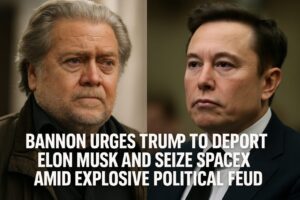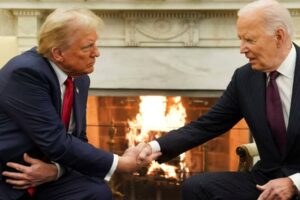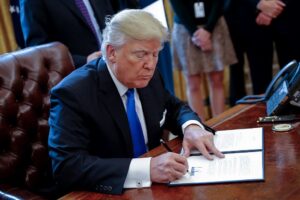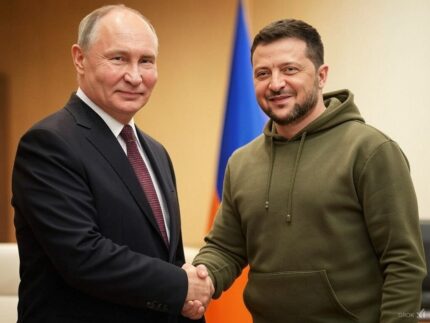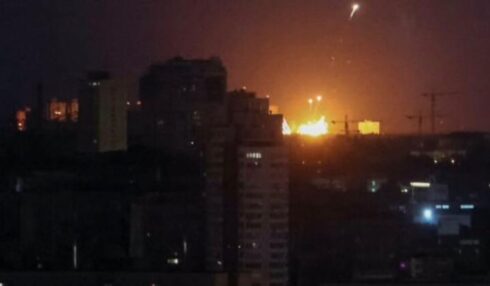Tensions between Russia and Ukraine escalated on Wednesday as both nations accused each other of launching air attacks that ignited fires and damaged infrastructure. The strikes occurred just hours after U.S. President Donald Trump and Russian President Vladimir Putin discussed a limited ceasefire in a lengthy phone call. The agreement, which focused solely on halting attacks on energy infrastructure, now appears fragile as hostilities persist.
Details of the Trump-Putin Call and the Ceasefire Agreement
On March 18, 2025, U.S. President Donald Trump and Russian President Vladimir Putin held a two-hour phone conversation to discuss the ongoing war in Ukraine. During the call, Trump proposed a 30-day ceasefire to ease hostilities, but Putin rejected the idea. Instead, the Russian leader agreed to a narrower ceasefire, limiting attacks on energy infrastructure, while maintaining that any broader truce would require the cessation of Western military aid to Ukraine and a freeze on Ukrainian military mobilization.
Despite the agreement, reports of renewed hostilities emerged within hours. The limited nature of the ceasefire raised skepticism among international observers, with many questioning whether it was a strategic move by Russia to gain a tactical advantage while continuing its broader military campaign.
Ukraine’s Reaction: Skepticism and Calls for Stronger International Action
Ukrainian President Volodymyr Zelensky expressed cautious optimism regarding the ceasefire but emphasized the need for a comprehensive cessation of hostilities. Speaking shortly after the Trump-Putin call, Zelensky reiterated Ukraine’s willingness to honor a full ceasefire, which he had reportedly agreed to before the conversation between Trump and Putin took place.
However, Zelensky’s tone shifted after reports of fresh Russian drone attacks emerged. “Russia is attacking civilian infrastructure and innocent people—right now,” said Andriy Yermak, Zelensky’s chief of staff, in a Telegram post. Ukrainian officials reported that more than 40 Russian drones had targeted multiple regions overnight, causing damage to hospitals, homes, and critical infrastructure.
In the northeastern Sumy region, two hospitals were hit by Russian drone strikes, forcing the evacuation of patients and medical personnel. Meanwhile, in the Kyiv region, a 60-year-old man was injured, and several houses were damaged by falling debris from intercepted drones. Zelensky urged the international community to take stronger measures against Russia, calling for increased pressure to force Moscow into committing to a genuine peace process.
International Responses: Skepticism and Strategic Concerns
The international community reacted with mixed sentiments to the limited ceasefire agreement and the subsequent hostilities. European leaders, including former UK Prime Minister Boris Johnson, expressed doubt over Putin’s commitment to any form of truce. “This is a familiar pattern. Russia agrees to a limited pause, only to exploit it for strategic advantage while continuing its aggression elsewhere,” Johnson said in a statement.
Former U.S. national security advisors were also critical of Trump’s handling of the situation, arguing that his concessions could weaken Ukraine’s position and embolden Russian aggression. Some advisors warned that negotiating with Putin without securing firm guarantees could lead to a prolonged conflict, with Russia using temporary pauses to reposition its forces.
Meanwhile, NATO officials closely monitored the situation, with Secretary General Jens Stoltenberg reiterating the alliance’s commitment to supporting Ukraine’s defense. “Any ceasefire that does not come with strong enforcement mechanisms risks being a tactical move by Russia to delay and regroup,” Stoltenberg stated.
Ongoing Military Escalation Despite Ceasefire Deal
Despite the agreement to halt attacks on energy infrastructure, military confrontations between Russia and Ukraine have continued. Ukrainian military officials reported that Russian forces launched a record 145 drone attacks overnight, with air defense units managing to down 72 of them. Ukrainian military sources also claimed that they used electronic warfare to disrupt and redirect 56 additional drones.
In retaliation, Ukraine launched drone strikes on Russia’s Krasnodar region, igniting a fire at an oil depot near the village of Kavkazskaya. While no casualties were reported, Russian authorities evacuated 30 employees from the facility as firefighters worked to contain the blaze. Russia’s defense ministry claimed that its forces had destroyed 57 Ukrainian drones overnight, including 35 over the border Kursk region, though it did not disclose the total number launched by Ukraine.
With both sides continuing to exchange attacks, the ceasefire’s credibility has been severely undermined. The ongoing hostilities highlight the difficulty in achieving a lasting resolution to the war, as both Russia and Ukraine remain locked in a cycle of military retaliation.
A Fragile and Uncertain Path Forward
The renewed air strikes following the Trump-Putin call have cast doubt on the effectiveness of the limited ceasefire agreement. While the focus on energy infrastructure protection was seen as a potential step toward broader peace efforts, the continued exchange of drone attacks demonstrates the deep-seated mistrust and strategic calculations driving the conflict.
With Ukraine calling for stronger international intervention and Russia maintaining its military pressure, the situation remains volatile. As global leaders assess the latest developments, the challenge of securing a comprehensive and enforceable ceasefire appears more complex than ever. The road to peace remains uncertain, with both diplomatic and military efforts continuing to shape the trajectory of the war.





